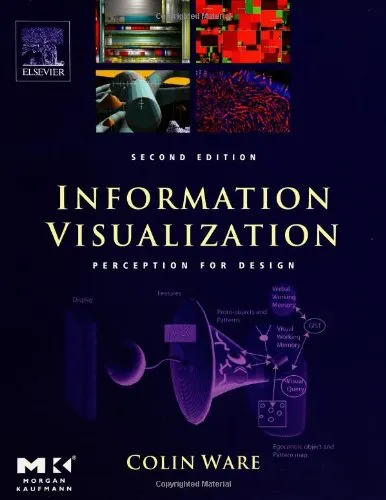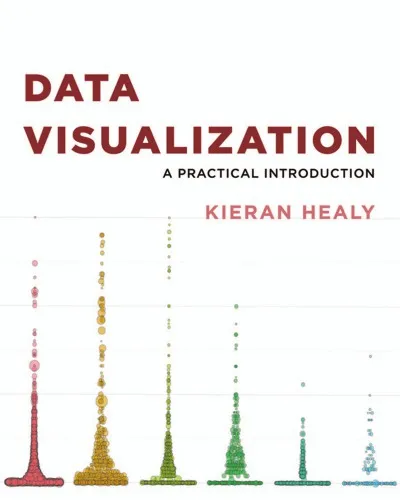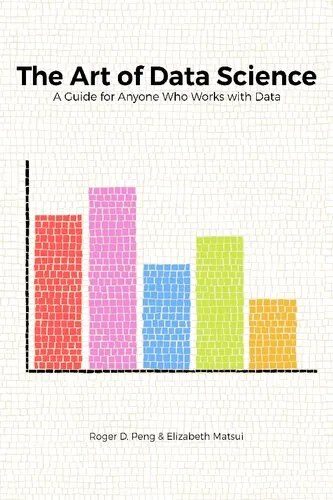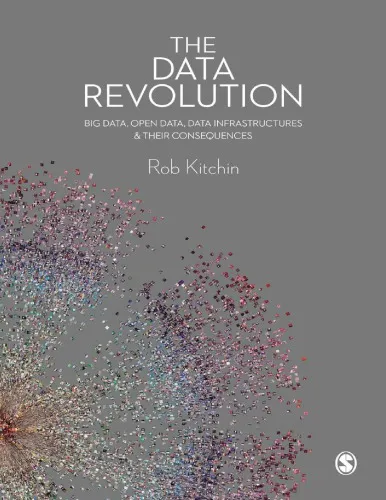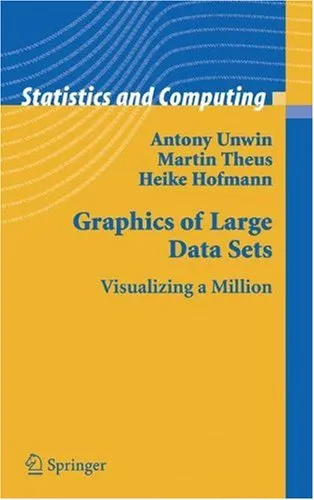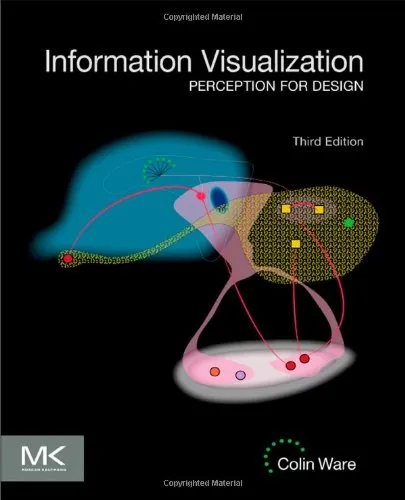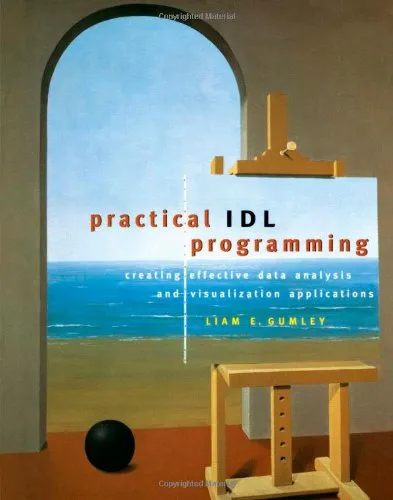Information Visualization: Perception for Design
4.5
بر اساس نظر کاربران

شما میتونید سوالاتتون در باره کتاب رو از هوش مصنوعیش بعد از ورود بپرسید
هر دانلود یا پرسش از هوش مصنوعی 2 امتیاز لازم دارد، برای بدست آوردن امتیاز رایگان، به صفحه ی راهنمای امتیازات سر بزنید و یک سری کار ارزشمند انجام بدینکتاب های مرتبط:
معرفی کتاب "Information Visualization: Perception for Design"
کتاب "Information Visualization: Perception for Design" نوشته کالین ویر، یکی از منابع اصلی و عمیق برای درک مفاهیم بصریسازی اطلاعات است. این کتاب به بررسی نحوه ترکیب مبانی روانشناسی ادراکی با طراحی بصری پرداخته و مرجعی ارزشمند برای طراحان گرافیک، تحلیلگران داده و پژوهشگران است.
خلاصهای از کتاب
این کتاب به صورت سیستماتیک مروری دقیق بر اصول و مبانی علمی ادراک بصری و کاربرد آنها در طراحی داده محور ارائه میدهد. کالین ویر در این اثر به شیوهای تحلیلی، مفاهیمی همچون درک رنگها، شکلها و حرکات، و نحوه تعامل چشم و مغز در فرایند مشاهده دادهها را به جزئیات شرح میدهد.
در فصلهای ابتدایی، به اهمیت درک روانشناسی دید و همچنین توانایی ما برای شناسایی الگوها پرداخته میشود. سپس، در فصلهای بعدی، موضوعاتی مانند چگونگی نمایش مناسب دادهها، استفاده از رنگها و Gradientها، و اهمیت Visual representation در تصمیمگیری توضیح داده میشود.
این کتاب نه تنها اصول علمی بلکه مهارتهای عملی را نیز به افرادی که با طراحی داده و تعامل با آن سر و کار دارند ارائه میدهد.
نکات کلیدی ارائهشده در کتاب
- بیان اهمیت درک ادراک بصری در فرایند طراحی اطلاعات.
- تشریح مفاهیم روانشناسی مانند Pre-attentive Processing و تاثیر آنها در طراحی بصری.
- راهنمای کامل برای استفاده از رنگها، اندازهها و خطوط در بصریسازی دادهها.
- آموزش نحوه طراحی اطلاعات به گونهای که مخاطب بتواند سریعاً الگوها و مفاهیم را تشخیص دهد.
- بررسی ابزارهای مختلف و تکنیکهای مدرن بصریسازی.
جملات مشهور از کتاب
"The purpose of visualization is insight, not pictures."
"Color is a powerful encoding channel, but it must be applied carefully to avoid misrepresentation."
"To design effective data visualizations, one must understand how the human visual system works."
چرا این کتاب اهمیت دارد؟
کتاب "Information Visualization: Perception for Design" یکی از معدود منابعی است که به طور جامع تعامل میان روانشناسی ادراک و طراحی داده را بررسی میکند. این کتاب به کسانی که در حوزههای طراحی داده، UX Design یا Data Science فعال هستند، ابزارهایی مفید برای ارتقای تواناییهایشان میدهد. اهمیت این کتاب نه تنها به ارائه مفاهیم علمی است بلکه به نحوه استفاده عملی و کاربردی از این دانش در پروژهها و محصولات واقعی نیز بازمیگردد.
خواندن این کتاب برای هر کسی که به بصریسازی اطلاعات علاقهمند است، یک ضرورت است؛ زیرا باعث میشود بتوانید مفاهیم پیچیده و حجیم داده را به روشی قابل فهم و ملموس به نمایش بگذارید. این مهارت در دنیای امروز که دادهها نقشی محوری دارند، یک امتیاز کلیدی محسوب میشود.
Introduction to 'Information Visualization: Perception for Design'
Understanding how humans process visual information is an essential aspect of crafting effective data visualizations. In the book 'Information Visualization: Perception for Design', Colin Ware combines cognitive science and visual design principles to provide a comprehensive guide for designers, analysts, and anyone interested in communicating information visually. By exploring how the human visual system works and how to leverage this knowledge in design, the book offers transformative insights into creating impactful visualizations. Grounded in science and rich in practical advice, this book is an indispensable resource for anyone involved in presenting data visually.
Detailed Summary of the Book
'Information Visualization: Perception for Design' bridges the gap between vision science and the art of information design. The book begins by delving into the psychological foundations of perception, examining how the brain and eyes work together to process visual stimuli. Ware highlights how attention mechanisms, pattern recognition, and sensory limitations impact the way people decode visual information.
The middle chapters delve into specific components of visualizations, such as color, spatial layout, motion, and shape. Ware explores these elements in depth, offering actionable guidance on how they can be used to enhance understanding. For instance, he discusses how color contrast can emphasize important patterns and how spatial positioning can guide users' focus to crucial areas of a chart or graphic.
Toward the latter part of the book, the focus shifts to the practical applications of these principles. Ware provides numerous real-world examples and suggestions for designing charts, graphs, dashboards, and other forms of data representation. Each section combines theory with hands-on design solutions, making it accessible and highly relevant for both students and professionals in the field.
The book not only covers scientific concepts but is full of actionable insights presented in an engaging and straightforward manner. It consolidates decades of research in visual perception into an easy-to-understand guide, making it a one-stop resource for building better visualizations.
Key Takeaways
- Human visual perception has inherent strengths and weaknesses, which should be considered in design.
- Designers should use color, motion, and shape effectively to communicate key patterns and relationships in data.
- The visual hierarchy is crucial for guiding attention and organizing information in an accessible manner.
- Understanding cognitive load and attention mechanisms can lead to better and more user-friendly visualization designs.
- Visualization is not just an art, but also a science that benefits greatly from empirical research in human perception.
Famous Quotes from the Book
"The purpose of visualization is insight, not pictures."
"The eye is exquisitely tuned to detect structure; our goal as designers is to maximize the brain's ability to perceive patterns in complexity."
"If a visualization fails to communicate the intended message quickly and effectively, it has failed as a tool of design."
Why This Book Matters
In an era dominated by data, the ability to communicate information visually is more critical than ever. 'Information Visualization: Perception for Design' equips readers with the knowledge needed to transform raw data into comprehensible visual stories. The book stands out because it not only focuses on aesthetic principles but also deeply explores the science behind why certain visualizations work better than others.
For designers, researchers, and business professionals, this book provides an essential toolkit for creating designs that effectively communicate complex ideas. It offers a systematic approach to understanding visual perception and applying it in practice, bridging the worlds of cognitive psychology, graphic design, and data analysis.
The practical lessons in this book extend far beyond data visualization, influencing fields such as user interface design, education, and marketing. By grounding its insights in peer-reviewed scientific studies, it ensures reliability and has become an authoritative resource in the field. This is why 'Information Visualization: Perception for Design' continues to be a must-read for anyone aiming to advance their skills in information communication.
دانلود رایگان مستقیم
شما میتونید سوالاتتون در باره کتاب رو از هوش مصنوعیش بعد از ورود بپرسید
دسترسی به کتابها از طریق پلتفرمهای قانونی و کتابخانههای عمومی نه تنها از حقوق نویسندگان و ناشران حمایت میکند، بلکه به پایداری فرهنگ کتابخوانی نیز کمک میرساند. پیش از دانلود، لحظهای به بررسی این گزینهها فکر کنید.
این کتاب رو در پلتفرم های دیگه ببینید
WorldCat به شما کمک میکنه تا کتاب ها رو در کتابخانه های سراسر دنیا پیدا کنید
امتیازها، نظرات تخصصی و صحبت ها درباره کتاب را در Goodreads ببینید
کتابهای کمیاب یا دست دوم را در AbeBooks پیدا کنید و بخرید
1340
بازدید4.5
امتیاز0
نظر98%
رضایتنظرات:
4.5
بر اساس 0 نظر کاربران
Questions & Answers
Ask questions about this book or help others by answering
No questions yet. Be the first to ask!
